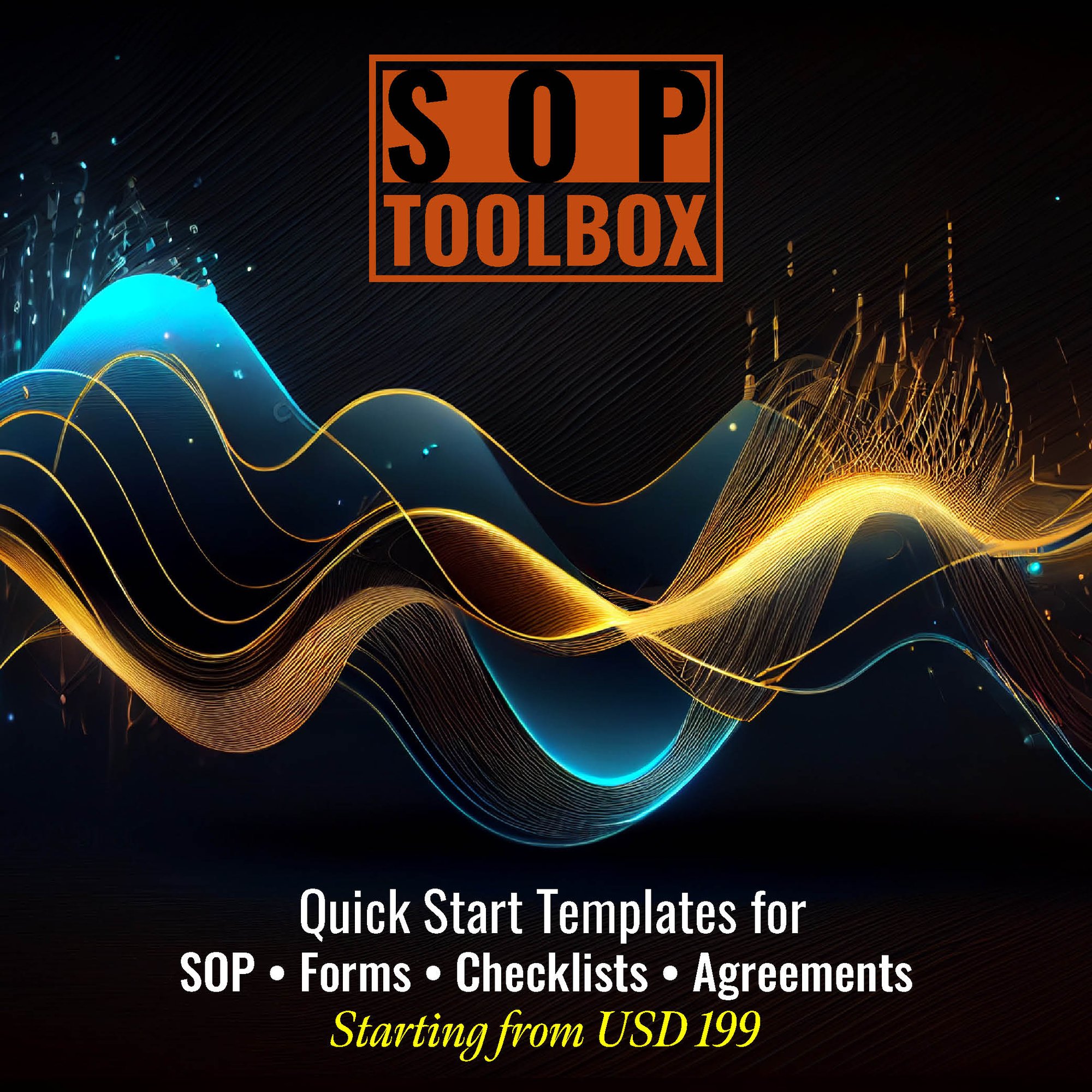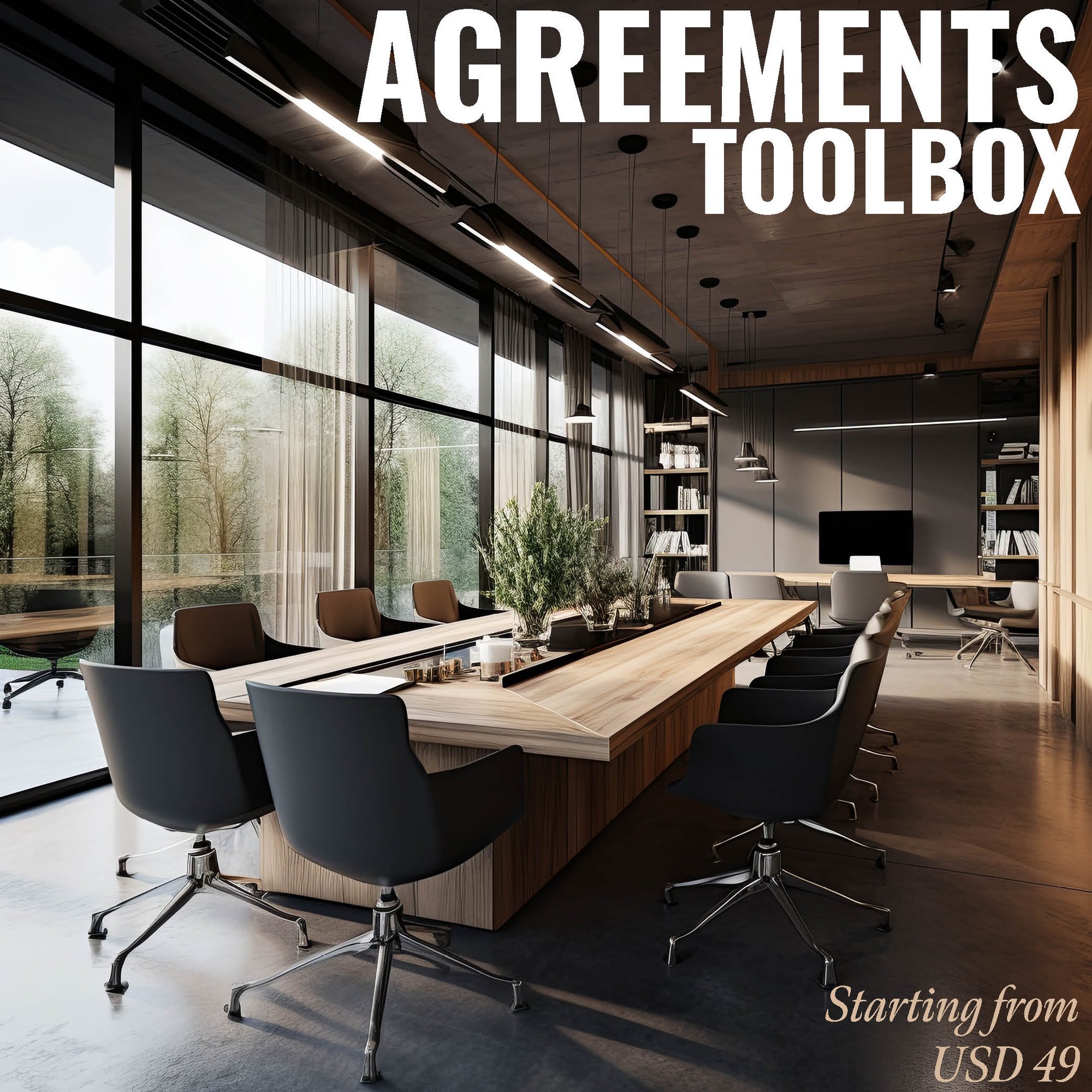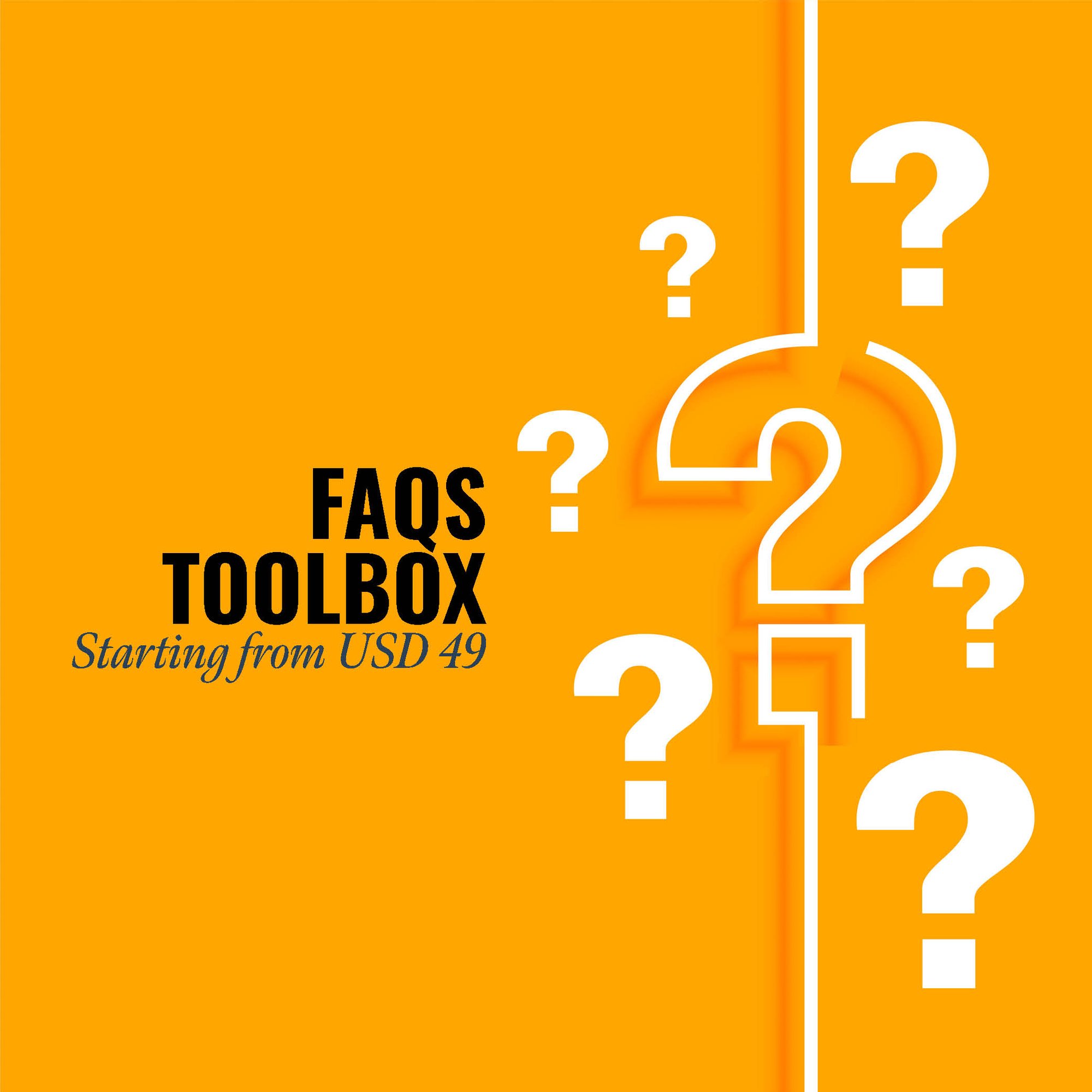The returns of an SOP (Standard Operating Procedure) Manual for the Administration of General Economic Programs are manifold. Firstly, it establishes standardized procedures for economic planning, policy implementation, and program evaluation, ensuring consistency and effectiveness in economic administration.
Secondly, the manual serves as a valuable training resource, fostering a knowledgeable and skilled workforce. This enhances the competence of personnel involved in economic program administration.
Thirdly, it aids in risk management by providing guidelines for compliance with economic regulations, ethical standards, and data security. This minimizes legal and operational risks associated with economic programs.
Moreover, the SOP Manual contributes to informed decision-making by providing a structured approach to data analysis, economic forecasting, and program assessment. This enhances the ability to adapt to changing economic conditions and make informed policy decisions.
In the realm of general economic programs, the manual's returns extend to adaptability, improved program effectiveness, and sustained success in contributing to overall economic development. Overall, it enhances operational excellence, compliance, and the ability to address economic challenges effectively.
CLICK HERE to download the List of SOPs Document in PDF format. Please share this document with your clients, colleagues and senior officers.
Top 50 Standard Operating Procedures (SOPs) for Administration of General Economic Programs
SOP-069-001: Standard Operating Procedure for Establishing Program Goals and Objectives
SOP-069-002: Standard Operating Procedure for Program Planning and Development
SOP-069-003: Standard Operating Procedure for Budget Formulation and Allocation
SOP-069-004: Standard Operating Procedure for Grant Application and Approval
SOP-069-005: Standard Operating Procedure for Monitoring Program Performance
SOP-069-006: Standard Operating Procedure for Data Collection and Analysis
SOP-069-007: Standard Operating Procedure for Stakeholder Engagement
SOP-069-008: Standard Operating Procedure for Program Evaluation
SOP-069-009: Standard Operating Procedure for Risk Management
SOP-069-010: Standard Operating Procedure for Regulatory Compliance

SOP-069-011: Standard Operating Procedure for Policy Development and Implementation
SOP-069-012: Standard Operating Procedure for Legislative Reporting
SOP-069-013: Standard Operating Procedure for Performance Metrics Reporting
SOP-069-014: Standard Operating Procedure for Quality Assurance and Improvement
SOP-069-015: Standard Operating Procedure for Program Documentation and Recordkeeping
SOP-069-016: Standard Operating Procedure for Confidentiality and Data Security
SOP-069-017: Standard Operating Procedure for Contract Management
SOP-069-018: Standard Operating Procedure for Procurement and Vendor Management
SOP-069-019: Standard Operating Procedure for Program Communication
SOP-069-020: Standard Operating Procedure for Crisis Management
SOP-069-021: Standard Operating Procedure for Program Training and Capacity Building
SOP-069-022: Standard Operating Procedure for Internal and External Audits
SOP-069-023: Standard Operating Procedure for Program Modifications and Updates
SOP-069-024: Standard Operating Procedure for Program Termination
SOP-069-025: Standard Operating Procedure for Program Transition Planning
SOP-069-026: Standard Operating Procedure for Stakeholder Feedback and Complaints
SOP-069-027: Standard Operating Procedure for Performance Recognition and Rewards
SOP-069-028: Standard Operating Procedure for Conflict Resolution
SOP-069-029: Standard Operating Procedure for Resource Allocation
SOP-069-030: Standard Operating Procedure for Program Communication Strategy

SOP-069-031: Standard Operating Procedure for Program Reporting to Regulatory Bodies
SOP-069-032: Standard Operating Procedure for Program Data Integrity
SOP-069-033: Standard Operating Procedure for Cross-Functional Collaboration
SOP-069-034: Standard Operating Procedure for Program Sustainability Planning
SOP-069-035: Standard Operating Procedure for Program Performance Metrics
SOP-069-036: Standard Operating Procedure for Program Knowledge Transfer
SOP-069-037: Standard Operating Procedure for Program Stakeholder Surveys
SOP-069-038: Standard Operating Procedure for Program Continuous Improvement
SOP-069-039: Standard Operating Procedure for Program Financial Reporting
SOP-069-040: Standard Operating Procedure for Program Impact Assessment
SOP-069-042: Standard Operating Procedure for Program Collaboration with External Agencies
SOP-069-043: Standard Operating Procedure for Program Risk Assessment
SOP-069-044: Standard Operating Procedure for Program Resource Management
SOP-069-045: Standard Operating Procedure for Program Training Evaluation
SOP-069-046: Standard Operating Procedure for Program Data Privacy Compliance
SOP-069-047: Standard Operating Procedure for Program Stakeholder Communication
SOP-069-048: Standard Operating Procedure for Program Performance Benchmarking
SOP-069-049: Standard Operating Procedure for Program Strategic Planning
SOP-069-050: Standard Operating Procedure for Program Resource Optimization

.jpg?width=645&height=337&name=Standard%20Operating%20Procedure%20-%20SOP%20ToolBox%20(1).jpg)
SOP ToolBox: If you are reading these lines, I am sure you are looking for Standard Operating Procedure guidelines or SOPs itself. In both the cases, searching in internet will not be yielding any great help. Because no company shares their SOP Development Process and certainly don’t share their SOP Documents. The best way to develop an SOP is creating one for yourself. At Fhyzics, we write SOPs day-in and day-out for companies across the globe including some of the Fortune 500 organisations. Our charge ranges from USD 5000 to USD 50000 depending upon the number of processes to be covered. Certainly, this is not affordable to small and mid-size organisations. Hence, we decided to create this SOP ToolBox to disseminate our 8-Step SOP Development Life-Cycle and best practices at an unbelievably low price.
I always say, writing an SOP is somewhere between art and science. So far you may be clueless on where to start and how to progress on an SOP? This will not be the case after you diligently go through this SOP ToolBox. We have summarised all our secrets here to get you started and to deliver a stunning SOP to your management.
-
Arts and cultural program administration, government
-
Consumer protection offices
-
Councils of Economic Advisers
-
Cultural and arts development support program administration
-
Development assistance program administration
-
Economic development agencies, government
-
Energy development and conservation agencies, nonoperating
-
Energy program administration
-
Enterprise development program administration
-
General economics statistical agencies
-
Industrial development program administration
-
Labor statistics agencies
-
Small business development agencies
-
Tourism development offices, government
-
Trade commissions, government
-
Trade development program administration
1. Standard Operating Procedures (SOP) Manual for Accounts Department
2. Standard Operating Procedures (SOP) Manual for Finance Department
3. Standard Operating Procedures (SOP) Manual for Customer Service
4. Standard Operating Procedures (SOP) Manual for CRM Department
5. Standard Operating Procedures (SOP) Manual for Credit Department
6. Standard Operating Procedures (SOP) Manual for Treasury Department
7. Standard Operating Procedures (SOP) Manual for Human Resources (HR) Department
8. Standard Operating Procedures (SOP) Manual for Training Department
9. Standard Operating Procedures (SOP) Manual for Learning & Development Department
10. Standard Operating Procedures (SOP) Manual for Administration Department
11. Standard Operating Procedures (SOP) Manual for Front Office
12. Standard Operating Procedures (SOP) Manual for House Keeping
13. Standard Operating Procedures (SOP) Manual for Safety Department
14. Standard Operating Procedures (SOP) Manual for Security Department
15. Standard Operating Procedures (SOP) Manual for Facilities Management Department
16. Standard Operating Procedures (SOP) Manual for Vigilance Department
17. Standard Operating Procedures (SOP) Manual for Legal Department
18. Standard Operating Procedures (SOP) Manual for Information Technology (IT) Department
19. Standard Operating Procedures (SOP) Manual for Sales & Marketing Department
20. Standard Operating Procedures (SOP) Manual for Design & Engineering
21. Standard Operating Procedures (SOP) Manual for Procurement Department
22. Standard Operating Procedures (SOP) Manual for Production
23. Standard Operating Procedures (SOP) Manual for SRM Department
24. Standard Operating Procedures (SOP) Manual for Supply Chain Department
25. Standard Operating Procedures (SOP) Manual for Warehouse
26. Standard Operating Procedures (SOP) Manual for New Product Development Department
27. Standard Operating Procedures (SOP) Manual for Research and Development
28. Standard Operating Procedures (SOP) Manual for Quality Department
29. Standard Operating Procedures (SOP) Manual for Calibration Department
30. Standard Operating Procedures (SOP) Manual for Maintenance Department
31. Standard Operating Procedures (SOP) Manual for Logistics Department
At the tip of the 1990s, the five largest economies within the world were the U.S., China, Japan, Germany, and India. the first U.S. agency supporting general economic programs is that the Department of Commerce (DOC). Established in 1931, the DOC encourages and serves the nation's international trade, economic process, and technological advancement. In 1999, the DOC had a budget of $5.5 billion dollars and 47,200 (full-time equivalent) employees.
Within the context of fostering a competitive laissez-faire economy, the DOC administers a good type of social and economic programs. as an example, it conducts research for technological advancements, grants patents, encourages the growth of minority-owned businesses, works to enhance the employment of natural resources, and promotes travel the U. S. by foreigners. The Secretary of Commerce oversees quite 30 offices and bureaus.
In 1997, the DOC published its "Strategic Plan for 1997-2002," addressing its five-year priorities. in this Plan, it identified three basic areas of focus, which is observed as "themes." Theme 1 of the Plan addressed the nation's economic infrastructure and DOC's role in developing jobs to support our economy. Theme 2 focused on the promotion of science and technology and their roles in contributing to a competitive global economy. Finally, Theme 3 outlined the DOC's responsibilities for the management of national resources and assets, like holding rights, the frequency spectrum, and ocean and coastal resources.
To better manage these objectives and responsibilities, the Department of Commerce is charged with the periodic conducting of the national census. In preparation for the 2000 census, an extra 80,000 (mostly temporary) employees were hired for the Bureau of the Census, bringing its total employment to 104,900 for the year. Its budget also jumped from $1.3 million in 1999 to $4.7 million in 2000.
- Siemens
- Cordry Sweetwater Conservancy District
- Energy Technologies Laboratories
- Research And Analysis
- Biofriendly Corp
- Wabashco, LLC
- Enerspec
- Powerhouse Debt Relief
- Solar Home Co
- Bright Power
- Recycled Energy Corp
- Mote Marine Lab Center For Tropical Research
- R And R Controls Inc
- Corpus Christi Area Economic Development Corp
- West World Management
- TrendPoint Systems
- Counselors To Small Businesses
- Office of Inspector General
- Federal Energy Regulatory Comm
- Energy Richland Operations
- Economic Development Comm
- Western Area Power ADM
- Nextphase Foundation Inc
- International Trade Comm US
- Small Business ADM Reg 1
- US Dept Energy Glden Field Off
- US Dept Energy Okrdge Feld Off
- Political Environment
In America, the two-party system has traditionally meant that Republicans want more state or locally-centered government and fewer programs while the Democratic Party favors the more centralized government. Public program administrators must change policies to react to the positions of the party in power. The recent economic downturn plays a part in the shift between philosophies too because politicians are skittish about funding certain kinds of programs. The trend has been toward downsizing and administrators have to figure out how to do the same work with fewer employees. Work morale suffers when raises are capped and hiring freezes as well as restructuring threaten jobs.
- Contracting
Responding to a demand for more frugality in programs, administrators have turned to private contractors. That change has had the opposite effect in many cases. Services that are part of the governance tend to be more responsible for their policies and limitations. Private contractors have tended to “play by other rules.” This has resulted in a number of scandals like the Blackwater issues in Iraq and, more recently, abuses in the privatization of prisons and with the debacle of the Veteran’s Administration. In the latter, contracting has resulted in budget over-runs and in outrageous charges for things like toilets. Still, the theory that competition may spur some more efficient use of resources may prove true in some instances. The challenge seems to be in deciding which things to privatize.
- Technology
The website Unpan.org cites this as a major game-changer for Public Administration. Even if public services did not want to implement technology, they would have no choice. Every other sector has turned to data-oriented operations and public service and non-profits must as well in order to interface with them. The issue is with organizational and personal security. In order to maintain a secure database, someone must have the expertise to administer the computer programs and that demands additional and more specialized personnel.
- Social Equity
The challenge presented by this issue is to make public organizations representative of the social and cultural environment in which they exist. In simpler terms, public housing organizations in minority areas must include a proportionate number of minority members in the administration. That not only applies to racial issues, but to gender and to sexual orientation. However, organizations founded in this manner may encounter conflicts between members and cultural groups. In each case, while recognizing the rights of the majority, organizations must protect minorities.
- Transparency
Hillary Clinton said in a debate that politicians must have a personal and public opinion. That is, there are times when administrators of public programs act contrary to their own convictions for the good of the organization. There are also times when organizations are not forthcoming about some actions because programs deemed necessary would not be well received or understood by the public that is funding the organization. The trend toward transparency means that administrators must walk a thin line between full public disclosure and having some clandestine policies. This transparency also affects other issues like contracting problems and the inclusion of minorities in appropriate numbers.
- Academic Consortium on International Trade - ACIT
- Academy of Financial Services - AFS
https://academyfinancial.org/ - Accounting and Finance Association of Australia and New Zealand - AFAANZ
https://www.afaanz.org/ - American Economic Association - AEA
https://www.aeaweb.org/
Administration of General Economic Programs industry generally takes care of economic activities in a broad way. It also helps in allocating resources and help to other departments of the government for smooth working. It indulges in all sort of economic activities that helps a country to flourish. Mostly general studies and experimentations will also be done here.
Please click here to review the SOP Templates’ Terms & Conditions.
Keywords: sop, manual, policy, sop meaning, sop full form, standard operating procedure, full sop, user manual, sop is, user guide, instruction manual, owners manual, sample sop, operators manual, sop example,standard operating procedure examples, abbreviation sop, standard operating procedure sample, milk sop, sop document, sop process,m manual, operating procedures, operating process, sop meaning in hindi, standard procedure, sop standard operating procedure, sop top, sop writing, standard operating procedures manual, sop meaning in english, sample sop for mba, standard operating procedures examples in office, product manual, sample sop for ms, maintenance manual, sop security, sop in research, sop in business, whats sop, standard of operation, sop set, sop procedure, sop marketing,sop training, sop hotel, sop, sop meaning business, sop form, sba sop,sop software, help manual, sop it, army sop, company sop, sop sap, o m manual, standard operating procedure examples for small business, shop manual, sop manual, sop meaning in business, purpose of standard operating procedures, sop full meaning, standard operating procedure meaning, sop military, sop standard, sop meaning medical, hr sop, sop production, purpose of sop, sop management, warehouse sop, sales sop, sop pharma, sop manufacturing, sop creation, sop laboratory, ms sop, sop full form in hindi, sop front office, sop customer service, sop online, gmp sop, sop purchasing, sop pharmacy, sop safety, sop for project management,sample sop for australian student visa, sop meaning in tamil, sop system, best sop, sop up, sop in english, sop for mechanical engineering, sop for university,sop in malay, sop lab, sop for business analytics, sop model, sop in pharmacy, developing sops, standard operating procedure examples manufacturing, sop full form in retail,sop full form in medical, sop engineering, sop application, writing standard operating procedures, procurement sop, sop maintenance,standard operating procedure nhs, sop clinical trial, sop operations,sop in construction, operating procedures manual, standard operating procedure ppt, standard procedure meaning, sop ppt, a sop, sop document meaning, sop def, sop full form in safety, sop quality control, sop for college, sop quality, sop service, types of sop, sop for engineering management, sop document sample, benefit of sop, preparing sop, standard operating procedure in hindi, sop for visa, sop compliance, sop protocol, sop aviation, sop meaning in chat, standard operating process, sop meaning military, sop for business management, standard operating procedure software, sop list, sop medical, sop logistics, sop project, sop for it department, sop call center, standard work procedures, sba sop 50 10, sop meaning in logistics, standard operating procedure laboratory, test sop, sop sample for ms, drafting sop, sops meaning in tamil, sops meaning in telugu, sop automotive, standard operating system, sop cafe, sop slideshare, sop ap, sop bank, sop in retail, creating standard operating procedures, sop admin, document control sop, pharmaceutical sop,sop in pharmaceutical industry, statement of purpose harvard, sop examples for ms, quality assurance sop, sop in clinical research, nursing sop, sop for transportation, sop policies, sops are specific to a process, sop in hindi, standard operating procedure for warehouse picking, master sop, list of sop for pharma, pharmaceutical sop examples, types of standard operating procedures, retail sop, sample sop for ms in mechanical engineering, standard operating protocol,sop supply chain, system operating procedure, sop rules, example of sop in research, sop in food industry, sop for international business management, sop for hospitality management, sop for hr department, army sop example, sop standard operating, office sop, hr standard operating procedures, preventive maintenance sop, sop for purchase department, human resources sop, fire department sops, information technology sop, operating procedure example, administration sop,sop for retail store, indian sop, construction management sop, sop hotel front office, example sop document, standard and procedures,working sop, sop for maintenance department, sop hrd department,sop full form in hotel industry, sop full, sop for human resource management, laboratory sop examples, standard operating procedure for quality control, sop for ms in mechanical engineering, sop meaning army, security standard operating procedures, sop machine, sample sop for internship, sop for hotel management, sample sop for masters, qa sop, developing standard operating procedures, standard operating procedure document, product recall sop, marketing statement of purpose, it standard operating procedures, equipment sop, sop purpose example, sop shipping, sop for sales and marketing,converting pos to sop, workshop sop, standard operating procedure manufacturing, digital marketing standard operating procedures, following standard operating procedures, sop ki full form, sop for nursing procedures, an sop, purchase sop for manufacturing company, sop a, statement of purpose for mba marketing, full meaning of sop, sop for research internship, research sop sample,vendor qualification sop, sop purchasing and receiving, sop meaning in visa, sop for admission, standard operating procedure medical office, sop in industry, sop sales marketing, navy sop, project management standard operating procedures, sop it support, standard operating manual, security operating procedures, statement of purpose for international business, procurement standard operating procedures, communication sop, sop full form in pharma, minimum sop, sop health and safety, product sop, sop for marketing department, sop in medical terms, sales standard operating procedure, sop purchase order, department sop, customer service standard operating procedures, clinical sop, marketing standard operating procedure, sop standard operating procedure example, construction standard operating procedures, standard of operations procedures manual sample, sop for facility management, sop full form in education, standard operating procedure in food industry, visa sop,sop for business administration, company sop meaning, sop work, sop operating procedure, sop for summer internship in engineering sample, general administration sop, sop for administrative duties.
Our SOP Templates’ clients are from the following States and Countries:
Alabama, Alaska, Arizona, Arkansas, California, Colorado, Connecticut, Delaware, Florida, Georgia, Hawaii, Idaho, Illinois, Indiana, Iowa, Kansas, Kentucky, Louisiana, Maine, Maryland, Massachusetts, Michigan, Minnesota, Mississippi, Missouri, Montana, Nebraska, Nevada, New Hampshire, New Jersey, New Mexico, New York, North Carolina, North Dakota, Ohio, Oklahoma, Oregon, Pennsylvania, Rhode Island, South Carolina, South Dakota, Tennessee, Texas, Utah, Vermont, Virginia, Washington, West Virginia, Wisconsin, Wyoming.
Afghanistan, Albania, Algeria, Andorra, Angola, Antigua and Barbuda, Argentina, Armenia, Australia, Austria, Azerbaijan, Bahamas, Bahrain, Bangladesh, Barbados, Belarus, Belgium, Belize, Benin, Bhutan, Bolivia, Bosnia and Herzegovina, Botswana, Brazil, Brunei Darussalam, Bulgaria, Burkina Faso, Burundi, Cabo Verde, Cambodia, Cameroon, Canada, Central African Republic, Chad, Chile, China, Colombia, Comoros, Congo (Republic of the), Costa Rica, Croatia, Cuba, Cyprus, Czech Republic (Czechia), Democratic People’s Republic of Korea (North Korea), Democratic Republic of the Congo, Denmark, Djibouti, Dominica, Dominican Republic, Ecuador, Egypt, El Salvador, Equatorial Guinea, Eritrea, Estonia, Eswatini, Ethiopia, Fiji, Finland, France, Gabon, Gambia, Georgia, Germany, Ghana, Greece, Grenada, Guatemala, Guinea, Guinea-Bissau, Guyana, Haiti, Honduras, Hungary, Iceland, India, Indonesia, Iran, Iraq, Ireland, Israel, Italy, Jamaica, Japan, Jordan, Kazakhstan,Kenya, Kiribati, Kuwait, Kyrgyzstan, Lao People’s Democratic Republic (Laos), Latvia, Lebanon, Lesotho, Liberia, Libya, Liechtenstein, Lithuania, Luxembourg, Madagascar, Malawi, Malaysia, Maldives, Mali, Malta, Marshall Islands, Mauritania, Mauritius, Mexico, Micronesia (Federated States of), Moldova, Monaco, Mongolia, Montenegro, Morocco, Mozambique, Myanmar (Burma), Namibia, Nauru, Nepal, Netherlands, New Zealand, Nicaragua, Niger, Nigeria, North Macedonia (formerly Macedonia), Norway, Oman, Pakistan, Palau, Panama, Papua New Guinea, Paraguay, Peru, Philippines, Poland, Portugal, Qatar, Republic of Korea (South Korea), Republic of the Congo, Romania, Russian Federation (Russia), Rwanda, Saint Kitts and Nevis, Saint Lucia, Saint Vincent and the Grenadines, Samoa, San Marino, Sao Tome and Principe, Saudi Arabia, Senegal, Serbia, Seychelles, Sierra Leone, Singapore, Slovakia, Slovenia, Solomon Islands, Somalia, South Africa, South Sudan, Spain, Sri Lanka, Sudan, Suriname, Sweden, Switzerland, Syrian Arab Republic (Syria), Tajikistan, Thailand, Timor-Leste, Togo, Tonga, Trinidad and Tobago, Tunisia, Turkey, Turkmenistan, Tuvalu, Uganda, Ukraine, United Arab Emirates, United Kingdom of Great Britain and Northern Ireland, United Republic of Tanzania, United States of America, Uruguay, Uzbekistan, Vanuatu, Venezuela, Viet Nam, Yemen, Zambia, Zimbabwe.
Fhyzics supports organisations in developing the following documentations:
Standard Operating Procedures (SOPs), Work Instructions, Policies and Procedures, Process Flow Diagrams, Job Descriptions, Training Manuals, Employee Handbooks, Compliance Guidelines, Quality Assurance Manuals, Health and Safety Procedures, Risk Management Plans, Business Continuity Plans, Internal Audit Procedures, Incident Reporting Forms, Performance Management Guidelines, Change Management Procedures, Vendor Management Guidelines, Customer Service Protocols, IT Security Policies, IT Support Documentation, Disaster Recovery Plans, Operational Checklists, Data Management Policies, Confidentiality Agreements, Non-Disclosure Agreements, Employee Onboarding Procedures, Employee Exit Procedures, Performance Appraisal Forms, Employee Code of Conduct, Conflict Resolution Procedures, Product Development SOPs, Supply Chain Management Guidelines, Procurement Guidelines, Inventory Management SOPs, Shipping and Receiving Procedures, Production Scheduling SOPs, Maintenance Procedures, Equipment Calibration Documents, Environmental Compliance Documentation, Sustainability Policies, Customer Feedback Forms, Marketing Strategies, Advertising Guidelines, Brand Management Guidelines, Product Packaging SOPs, Laboratory Testing Procedures, Regulatory Compliance Documentation, Tax and Accounting Procedures, Contract Management Procedures, Legal Compliance Guidelines, Financial Reporting Procedures, Budgeting Procedures, Internal Control Procedures, Fraud Prevention Policies, Asset Management Guidelines, Purchase Order Procedures, Sales and Distribution Guidelines, Client Contracts, Customer Return Policies, Internal Communication Protocols, Vendor Evaluation Forms, Product Safety Standards, Workplace Health and Safety Standards, Public Relations Procedures, Social Media Management Guidelines, Crisis Management Plans, Employee Grievance Procedures, Privacy and Data Protection Policies, Digital Transformation Guidelines, Innovation Management Procedures, Continuous Improvement Guidelines, Strategic Planning Documents, Corporate Social Responsibility (CSR) Guidelines, Audit Trails and Records, Employee Training and Development Records, Succession Planning Documents, Talent Acquisition Procedures, Team Collaboration Protocols, Employee Benefit Plans, Workplace Diversity Guidelines, Time and Attendance Tracking, Payroll Procedures, Employee Leave Policies, Conflict of Interest Policy, Emergency Response Procedures, Environmental Impact Assessment Procedures, Transportation and Logistics Procedures, Inventory Control Forms, Warehouse Management Guidelines, Product Lifecycle Management SOPs, Customer Satisfaction Surveys, Third-Party Risk Assessment Guidelines, Technology Adoption Policies, Software Licensing Guidelines, Security Incident Response Procedures, Supply Chain Risk Management Policies, Product Recall Procedures, Food Safety Guidelines, Employee Wellness Programs, Workplace Ergonomics Guidelines.
















